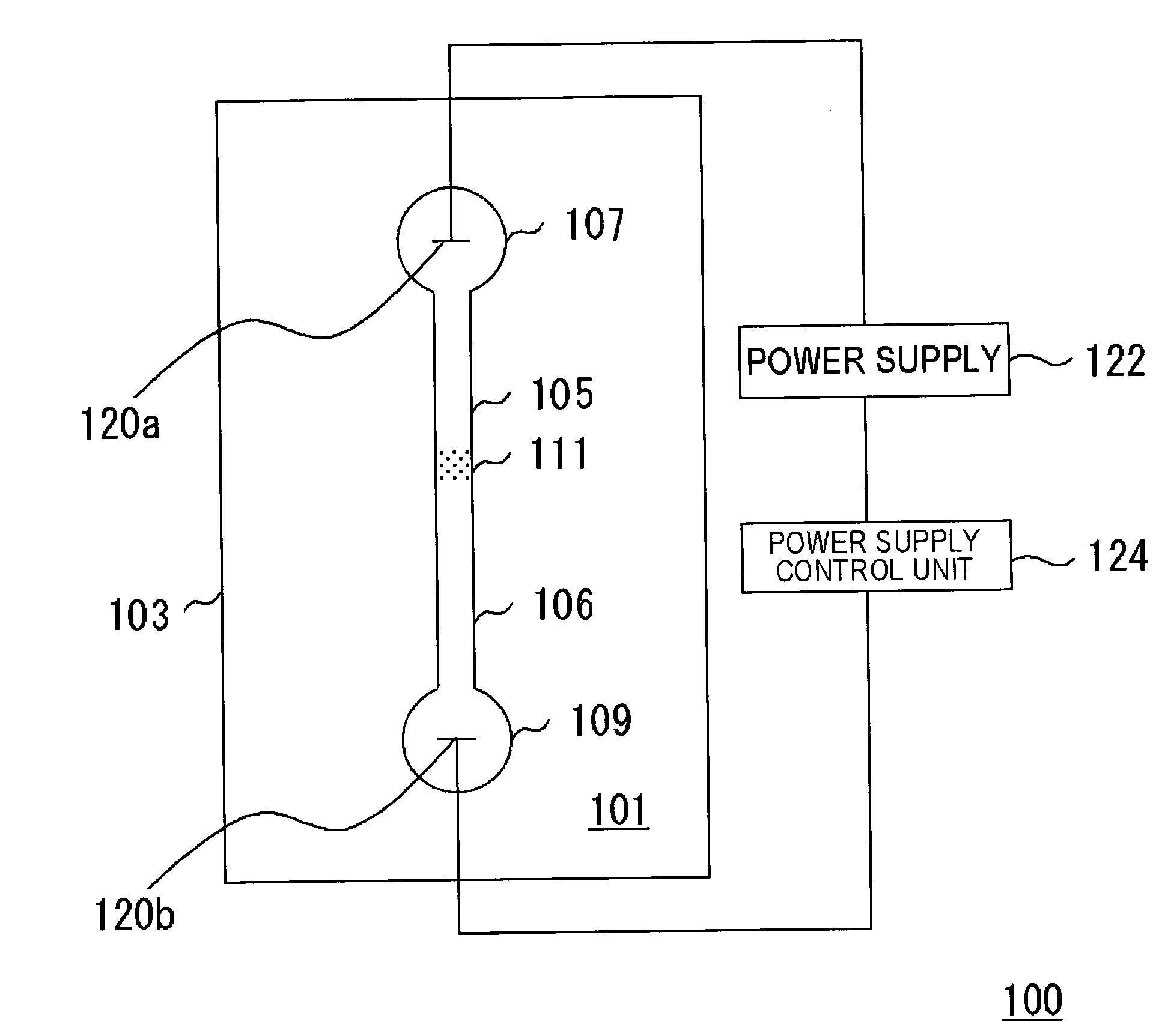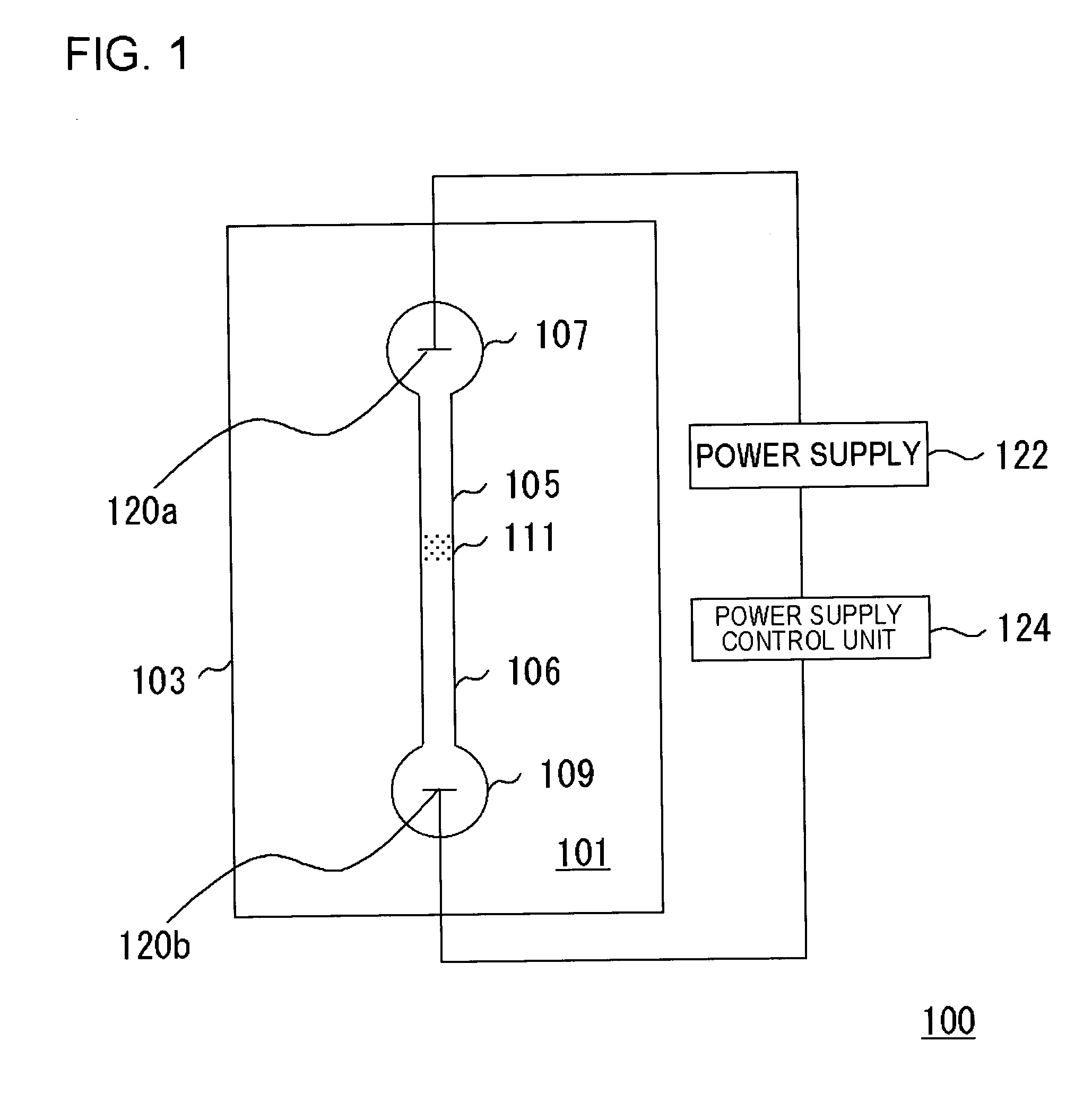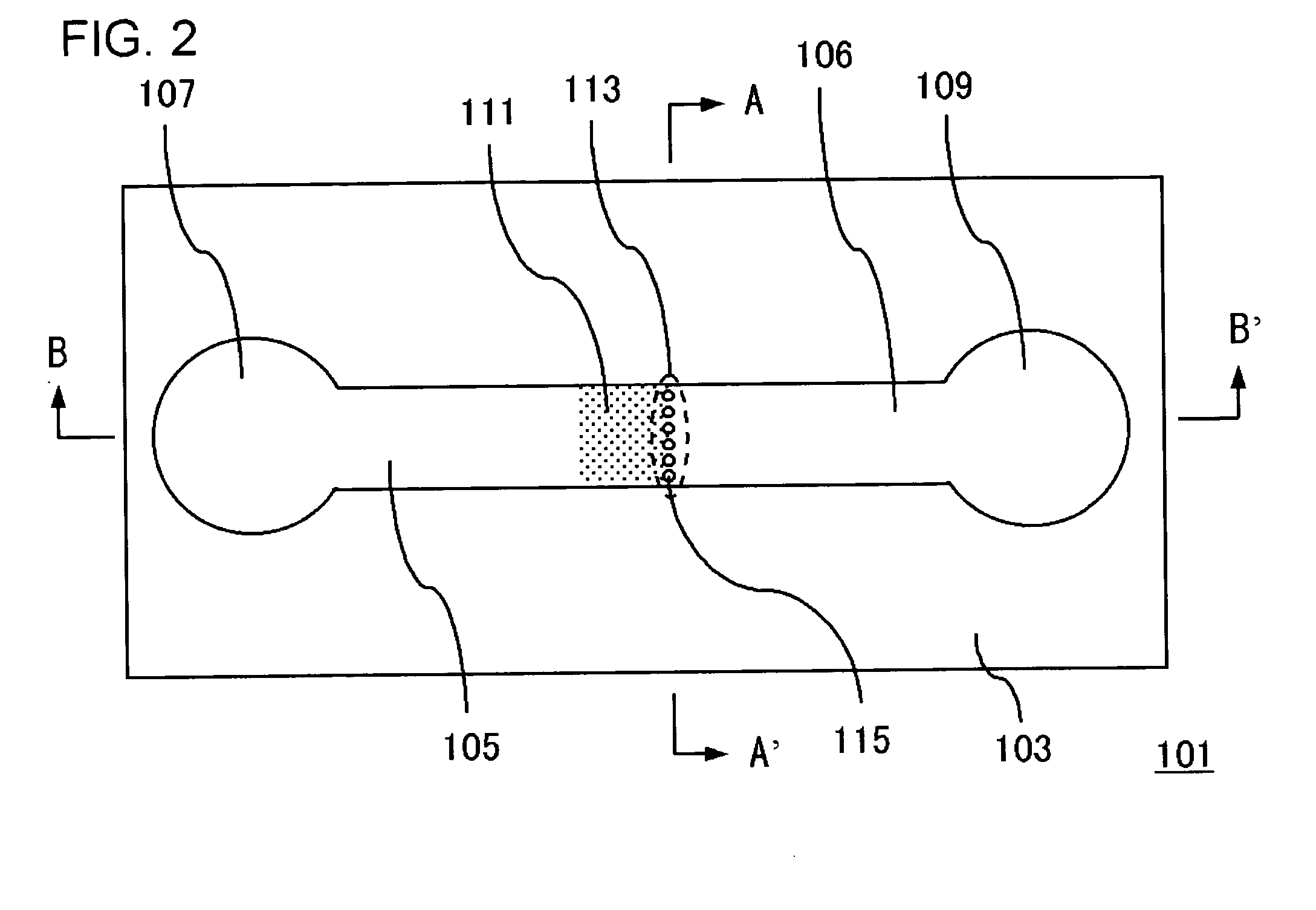Microchip, sampling method, sample separating method, sample analyzing method, and sample recovering method
a microchip and sample technology, applied in the field of microchips, can solve the problems of reducing resolution, unable to obtain high-accuracy analysis, and unable to perform high-accuracy analysis, and achieve the effects of reducing resolution, reducing the degree of freedom, and efficient separation or recovery
- Summary
- Abstract
- Description
- Claims
- Application Information
AI Technical Summary
Benefits of technology
Problems solved by technology
Method used
Image
Examples
first embodiment
[0063] The present embodiment is about a microchip in which a physical damming member is provided in the damming portion provided in the channel. FIG. 1 is a view showing a configuration in which the microchip of the embodiment is applied to a separation apparatus. A microchip 101 constituting a separation apparatus 100 includes a sample introducing portion 107, first channel 105, a second channel 106, and a sample recovery portion 109. The sample introducing portion 107 is formed on a substrate 103. A damming portion 111 is provided in the first channel 105, and the damming portion stems the sample in a complex state in which a carrier holds the sample. A separation area (not shown) is provided at a predetermined position of the second channel 106.
[0064] The sample is introduced into the sample introducing portion 107 while held by the carrier, that is, being in the complex state, and is moved in the first channel 105. Because the sample cannot pass though the damming portion 111 ...
second embodiment
[0127] This embodiment is a mode, in which the micell having a disulfide bond is used and a reducing agent introduced into the first channel 105 triggers the collapse of the sample-carrier complex 119 in the microchip 101 (FIG. 2) described in the first embodiment. The configuration of the microchip according to the embodiment is basically similar to the microchip 101. However, it is not necessary to heat the damming portion 111, so that the heater 117 is not particularly provided.
[0128] When the sample 121 is the polyanion such as DNA, for example, polythiol-polycation-hydrophilic polymer block copolymer can be prepared and used to form the micell involving the sample 121. Since the carrier 123 has the polycationic area, the carrier 123 and the sample which is of the polyanion can form the poly-ion-complex micell. In this case, polythiol should mean the polymer having a monomer unit whose side chain has a —SH group.
[0129] A PEG-polyLys-thiol group introduced polyLys block copolym...
third embodiment
[0131] This embodiment differs from the first embodiment in the configuration of the damming portion 111 of the microchip.
[0132]FIG. 15 is a top view showing the damming portion 111 of a microchip according to the embodiment. Referring to FIG. 15, plural hydrophobic areas 191 are regularly arranged at substantially even intervals in the damming portion 111. The surface of the substrate (not shown) made of quartz or the like is exposed and is formed in the hydrophilic area 192 in the area except for the hydrophobic areas 191. The hydrophobic property of the damming portion 111 is properly controlled by forming the hydrophobic / hydrophilic patterns. A dispersing medium of the sample-carrier complex 119 exists selectively in the upper portion of the hydrophilic area 192, and the upper portion of the hydrophobic area 191 becomes empty.
[0133] As a result, similarly to the columnar bodies 115 in the first embodiment, the hydrophobic area 191 can stem the sample-carrier complex 119 which ...
PUM
| Property | Measurement | Unit |
|---|---|---|
| width | aaaaa | aaaaa |
| thicknesses | aaaaa | aaaaa |
| thicknesses | aaaaa | aaaaa |
Abstract
Description
Claims
Application Information
 Login to View More
Login to View More - R&D
- Intellectual Property
- Life Sciences
- Materials
- Tech Scout
- Unparalleled Data Quality
- Higher Quality Content
- 60% Fewer Hallucinations
Browse by: Latest US Patents, China's latest patents, Technical Efficacy Thesaurus, Application Domain, Technology Topic, Popular Technical Reports.
© 2025 PatSnap. All rights reserved.Legal|Privacy policy|Modern Slavery Act Transparency Statement|Sitemap|About US| Contact US: help@patsnap.com



